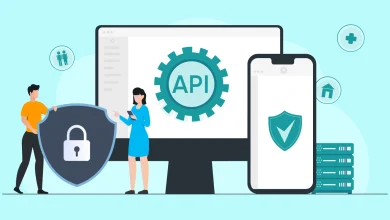
The year 2023 witnessed a transformative surge in the use of artificial intelligence (AI) – particularly generative AI – across all manner of sectors. Propelling innovation, efficiency, and problem-solving capabilities to new heights, reliance on this technology has grown exponentially.
However, as we step into 2024, a shadow of concern looms large – the vulnerability of AI security. With more and more personal data – ranging from health and biometric data, to voice recordings and finance data – entrusted to AI systems, there’s a pressing need for the industry to prioritise confidentiality in its ongoing development.
Vulnerabilities in the multifaceted landscape of AI Security
The world of AI presents various vulnerabilities that could be exploited by malicious actors. These include, but are not limited to adversarial attacks, data poisoning, aviation attacks and insufficient security protocols, whereby weak encryption, inadequate access controls, and lack of secure communication channels can expose AI systems to unauthorised access and data breaches.
While AI systems that process personal data may unintentionally leak sensitive information, posing privacy risks, especially when models are trained on sensitive datasets, the intellectual property (IP) of AI companies could also be at risk if the AI they employ is not securely fortified.
The landscape of AI security is multifaceted, and as we move forwards, distinguishing between various models becomes crucial. Software as a Service (SaaS)-based AI models, for example, may present a formidable challenge for hackers, the real vulnerabilities lie in the IP of AI models running on-premise or on mobile applications. Here, a skilled developer could easily reverse engineer a code to steal the IP, and make subtle alterations to leave almost no discernible traces of his IP theft. As a result, the sanctity of confidential data is jeopardised, and the very essence of the AI’s uniqueness may be compromised.
Proactive measures for the industry – encryption’s part to play
To address these impending challenges, what the industry needs is a surge in the development of AI models designed with security at its heart. And this is a move that’s fully expected, with advancements in end-to-end encryption (E2EE) likely to play a key role. Ensuring that AI models incorporate robust encryption is essential – it protects data transmission and storage, which safeguards against unauthorised access and interception, especially in scenarios where AI models interact with sensitive information. However, E2EE requires data to be decrypted for processing, at which point there is a potential risk, especially if the processing involves third-party services.
Fully Homomorphic Encryption (FHE), on the other hand, is an emerging cryptographic technique that enables computations to be performed on encrypted data without the need for decryption, preserving its confidentiality throughout the entire process. While E2EE may be ideal for securing
digital communication – allowing only the communicating users to read the messages – in the context of, for example, healthcare, FHE allows researchers to perform statistical analyses, machine learning predictions, and model training directly on encrypted data without ever exposing patients’ details.
While FHE is still somewhat evolving, meaning key challenges remain, developments of this nature will be vital going forwards, helping AI developers to adopt a proactive stance and outsmart the ever-evolving tactics of potential hackers.
Additionally, collaborations between AI developers, cybersecurity experts, and regulatory bodies will play a pivotal role in establishing industry-wide standards for AI security. Governments and regulatory bodies will need to adapt swiftly to the dynamic landscape of AI, ensuring that legal frameworks are in place to address breaches and hold accountable those responsible for compromising data integrity.
There will also be a huge onus on the industry to proactively address these security concerns themselves. Startups and smaller companies, in particular, must start being more vigilant about the AI solutions they integrate into their operations. A breach not only risks the loss of sensitive data but also endangers the very core of a company’s innovations and proprietary knowledge.
Why AI’s development shouldn’t be overshadowed by risk
In 2024 and beyond, we expect to see somewhat of a paradigm shift in how AI models are evaluated. The AI industry will undoubtedly prioritise confidentiality, as use cases will continue to develop. No longer will the effectiveness of AI be measured solely by its predictive capabilities or processing speed. Instead, the spotlight will be on security measures and the ability of these models to safeguard critical IP and end-user data.
However, it’s important to remember that the potential benefits and transformative power of AI are immense. So while it’s crucial to acknowledge and address the risks associated with AI, it’s important not to let those risks overshadow progress and innovation in a field that has the capacity to revolutionise industries including healthcare, finance and manufacturing.
A balanced approach – which sees the development of AI going hand in hand with robust security protocols – will ensure that society can benefit from the positive aspects of this transformative technology.





